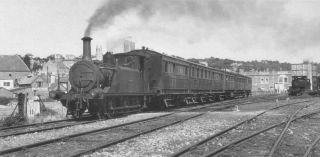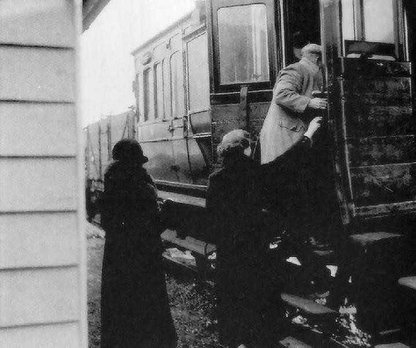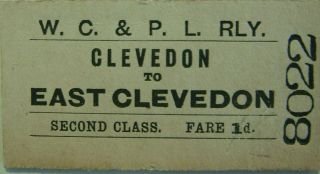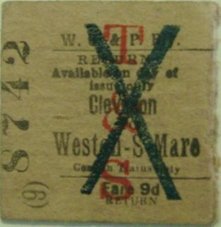Weston Clevedon & Portishead Railway
Railway clearance house map of 1911 |
Early history
The WC&PR was originally proposed as a standard gauge tramway in 1884 by the Weston-Super-Mare, Clevedon & Portishead Tramways Company to link the three small coastal towns. The line was planned to run on the street along the Boulevard in Weston-super-Mare and from there off-road apart from numerous road crossings all of which were to be on the level. An Act of Parliament to authorise the construction of the railway was passed on Aug 6, 1885.
Building of the Weston-super-Mare to Clevedon section of the railway began in 1887 but due to various legal and financial problems, progress was very slow, and the time limit of the Act expired requiring further Acts to be passed in July 25, 1890 and December 1891. Due to these delays some of the track had to be re-laid before the line opened because sleepers had rotted. The track along the Boulevard in Weston-super-Mare was taken up before the line opened due to complaints from the council. The section finally opened on December 1, 1897. Two years after the opening, the tramway was designated a light railway and the name was changed to the Weston, Clevedon & Portishead Light Railway Company
Overview
This 14-mile standard gauge railway, originally planned as a tramway, linked the three seaside towns of its title on the Bristol Channel, opening throughout as a light railway in 1907. Stephens became its traffic manager in 1911, and swiftly became engineer,locomotive superintendent and general manager. Never a commercial success, it closed in 1940, although the company was never officially wound up.
Portishead extension
The extension to Portishead had been planned from the beginning, but financial constraints delayed its construction. It required another Act of Parliament, which was passed in Aug1899, There were many objections to the proposed extension, one of which was that the line was to run through the streets in Clevedon. These objections were overcome, but a man with a flag had to lead trains across the street at 4 mph. The extension to Portishead was built as a light railway and opened on August 7, 1907.
Financial problems
The finances of the railway were always precarious becoming serious by 1905. It entered receivership in 1909 and was in decline up to the outbreak of World War II, not helped by the increase in road traffic. It had relied on the transport of stone from the Black Rock quarries and the decline in this business made things worse. The railway spent 31 of its 43 years in the hands of receivers.
Colonel H.F. Stephens
Col. H. F. Stephens took over the running of the WC&PR in 1911. He was known as the ‘Light Railway King’ because he ran a number of similar railways, and though he got the costs under control, the financial situation remained poor. After his death in 1931 W. H. Austen followed him as manager until the railway closed.
Closure
Due to an ever-worsening financial state, the Company applied for a Court order to close the line and the last train ran on May 18, 1940. The Great Western Railway purchased the line (but not the land) to use it for storage, and for a short time up to 200 coal wagons were stored on the line. It was decided to remove the track for use in the war effort, and it was cleared between October 1942 and late 1943
The legality of the ownership of the land was a long-running issue that was never properly resolved.
Right WC&PLR No. 2 'Portishead', leaving Clevedon for Weston
Other features
Links to the Great Western Railway were provided at Clevedon and Portishead , and in 1915 a short branch to a wharf at Wick St. Lawrence on the River Yeo was built. Sidings served three stone quarries in the Gordano Valley.
WC&PR sign from Clevedon Station
The sign was rescued by Kerry Bylis who has donated it to the Colonel Stephens Museum.
The sign was originally in the town centre of Clevedon and it is thought that it originally had a finger pointing above the letters. The sign was found by Kerry when he visited the retired chief highways engineer for Somerset County Council who had the sign on his railway room door.











